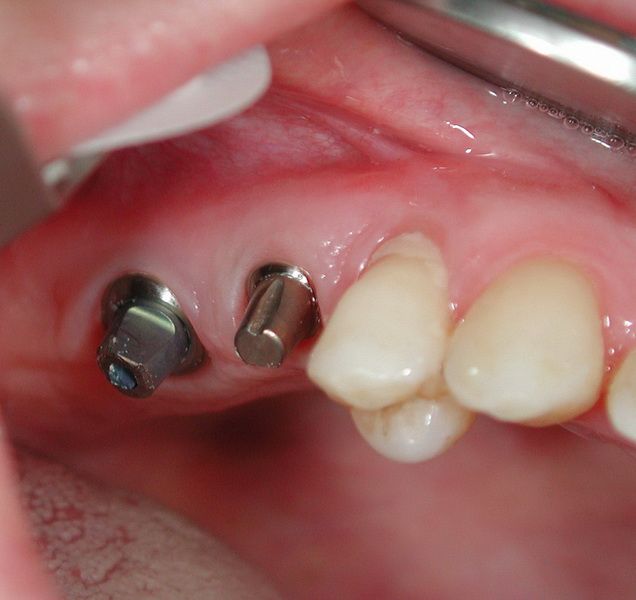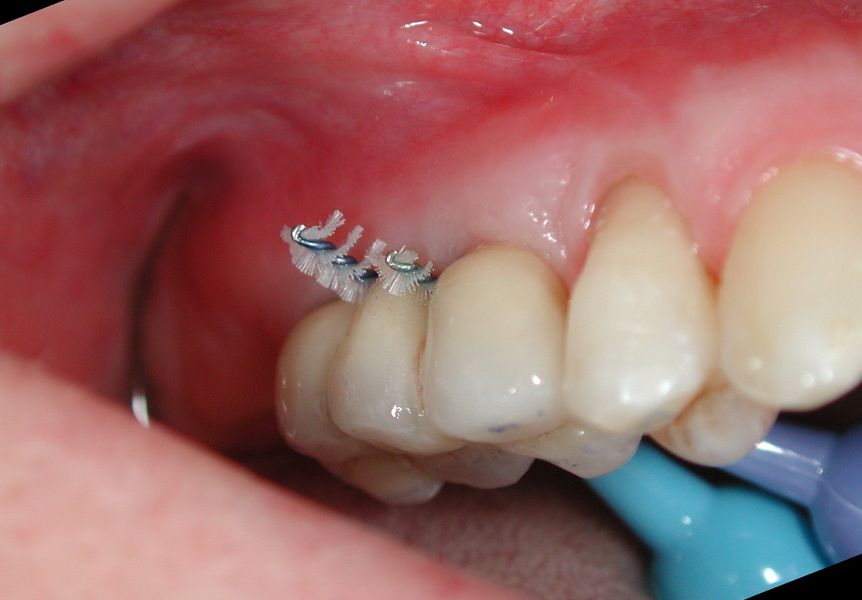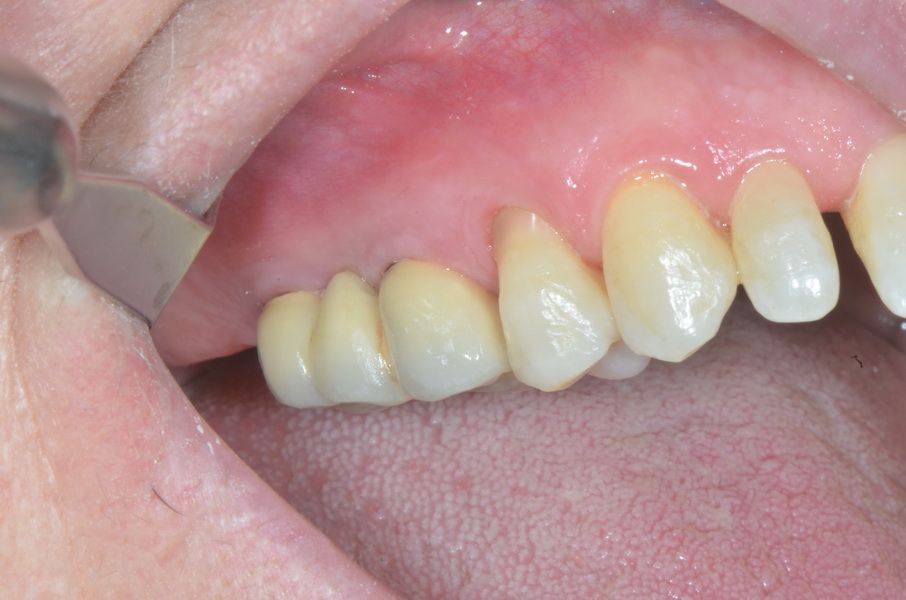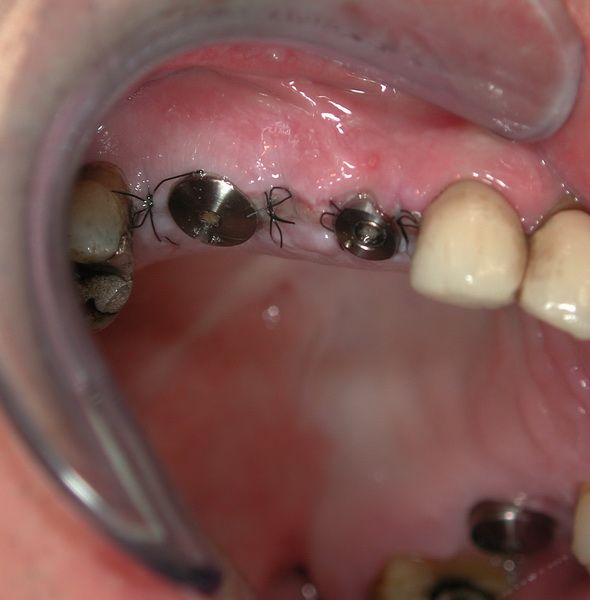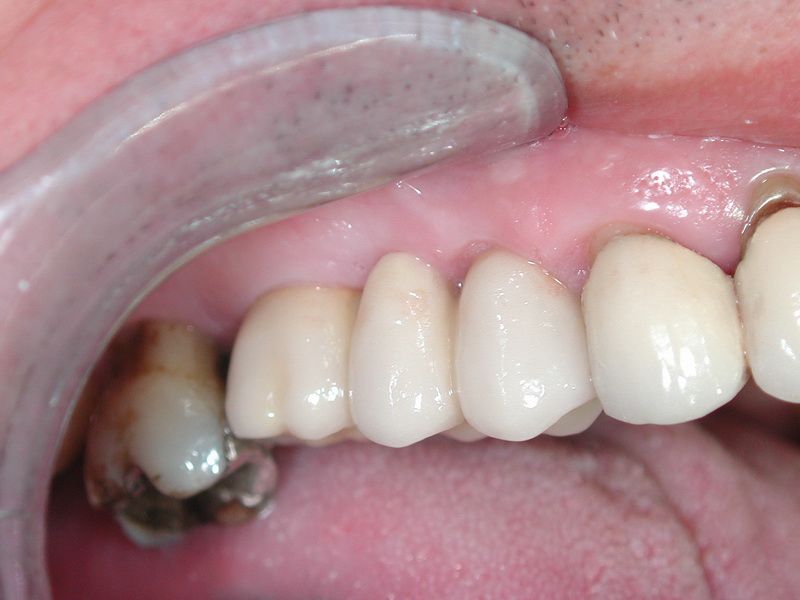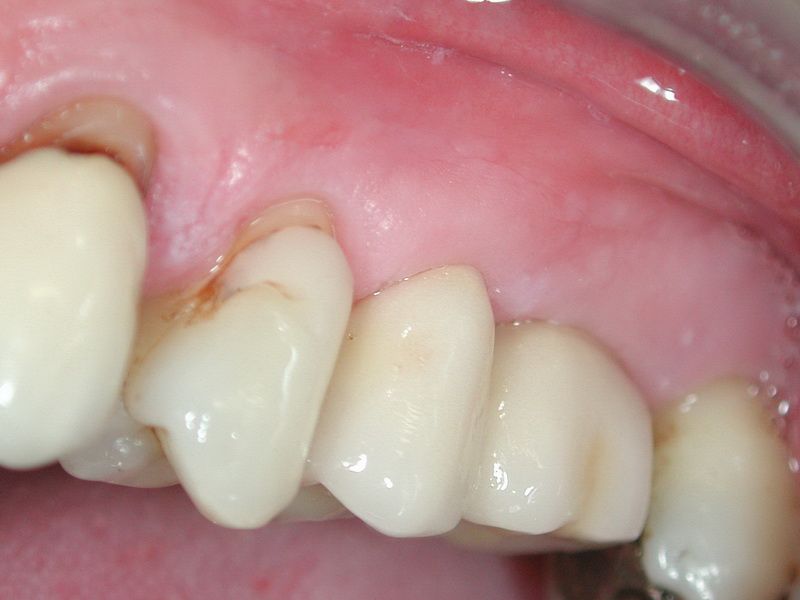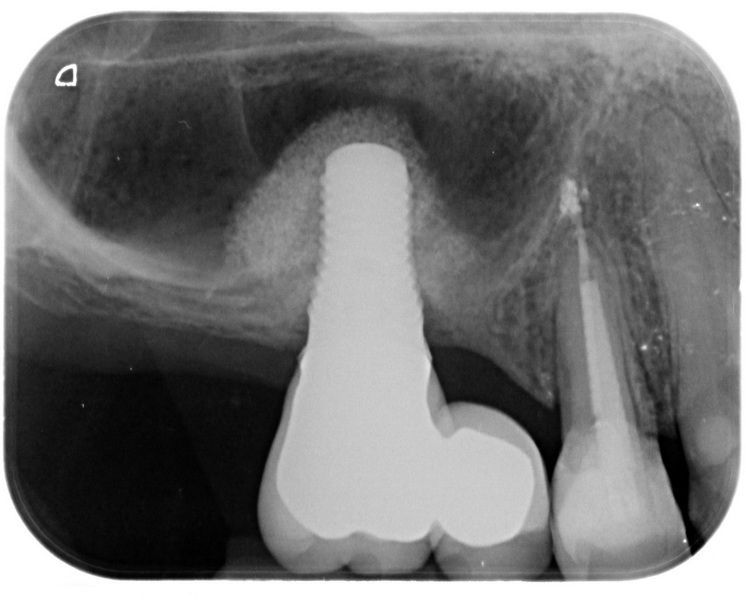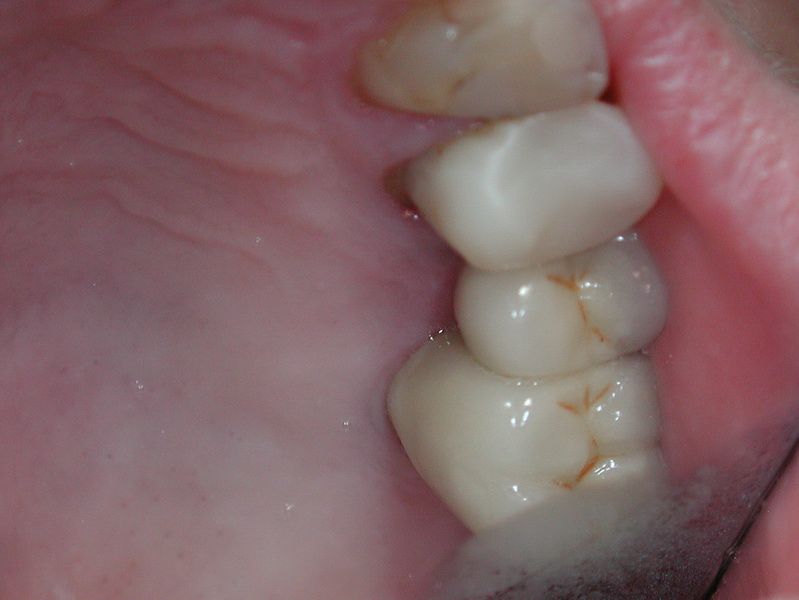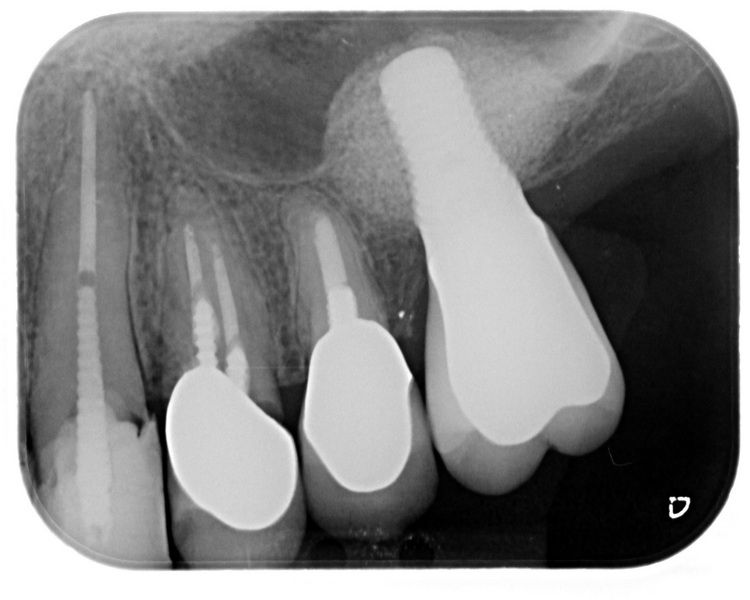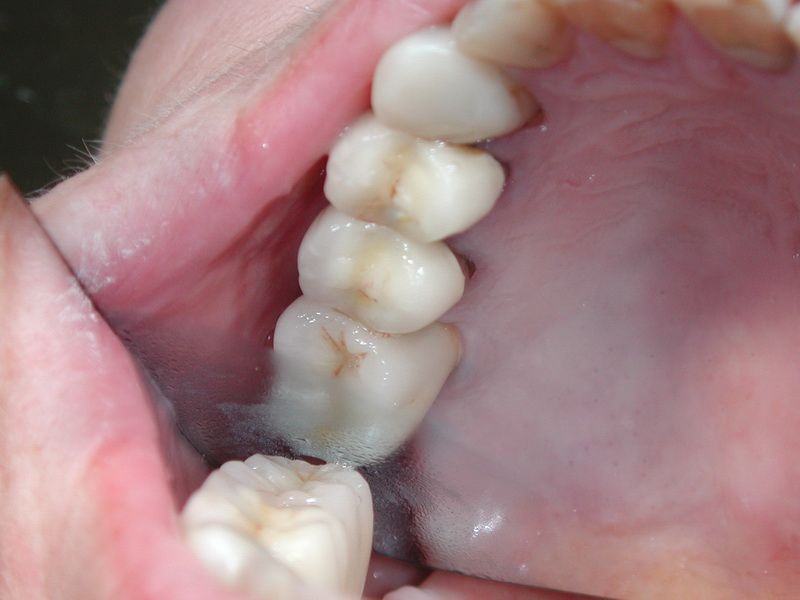The suprastructure of an implant
The first priority of forming a suprastructure is facilitating trouble-free dental hygiene.
A free end gap restoration is mostly restored with a "sixer" occlusion. Absent premolars and molars are replaced with a tripartite implant bridge (implantation in the four and six area), and a missing premolar and molar with a winged bridge.
Intermediate gaps under 16 mm in width are restored with a winged bridge and over 16 mm with a tripartite bridge.


